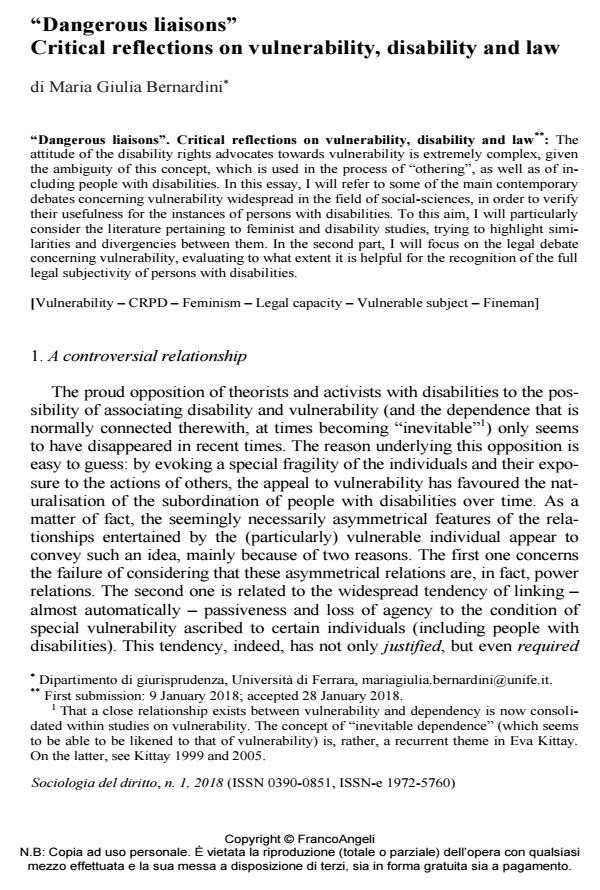"Dangerous liaisons" Critical reflections on vulnerability, disability and law
Titolo Rivista SOCIOLOGIA DEL DIRITTO
Autori/Curatori Maria Giulia Bernardini
Anno di pubblicazione 2018 Fascicolo 2018/1
Lingua Inglese Numero pagine 23 P. 101-123 Dimensione file 318 KB
DOI 10.3280/SD2018-001005
Il DOI è il codice a barre della proprietà intellettuale: per saperne di più
clicca qui
Qui sotto puoi vedere in anteprima la prima pagina di questo articolo.
Se questo articolo ti interessa, lo puoi acquistare (e scaricare in formato pdf) seguendo le facili indicazioni per acquistare il download credit. Acquista Download Credits per scaricare questo Articolo in formato PDF

FrancoAngeli è membro della Publishers International Linking Association, Inc (PILA)associazione indipendente e non profit per facilitare (attraverso i servizi tecnologici implementati da CrossRef.org) l’accesso degli studiosi ai contenuti digitali nelle pubblicazioni professionali e scientifiche
The attitude of the disability rights advocates towards vulnerability is extremely complex, given the ambiguity of this concept, which is used in the process of "othering", as well as of including people with disabilities. In this essay, I will refer to some of the main contemporary debates concerning vulnerability widespread in the field of social-sciences, in order to verify their usefulness for the instances of persons with disabilities. To this aim, I will particularly consider the literature pertaining to feminist and disability studies, trying to highlight simi-larities and divergencies between them. In the second part, I will focus on the legal debate concerning vulnerability, evaluating to what extent it is helpful for the recognition of the full legal subjectivity of persons with disabilities.
Parole chiave:Vulnerability, CRPD, Feminism, Legal capacity, Vulnerable subject, Fineman
- The Politics of Vulnerable Groups Fabio Macioce, pp.7 (ISBN:978-3-031-07546-9)
- Understanding Prisoner Victimisation Aurore Vanliefde, pp.115 (ISBN:978-3-031-54349-4)
Maria Giulia Bernardini, "Dangerous liaisons" Critical reflections on vulnerability, disability and law in "SOCIOLOGIA DEL DIRITTO " 1/2018, pp 101-123, DOI: 10.3280/SD2018-001005